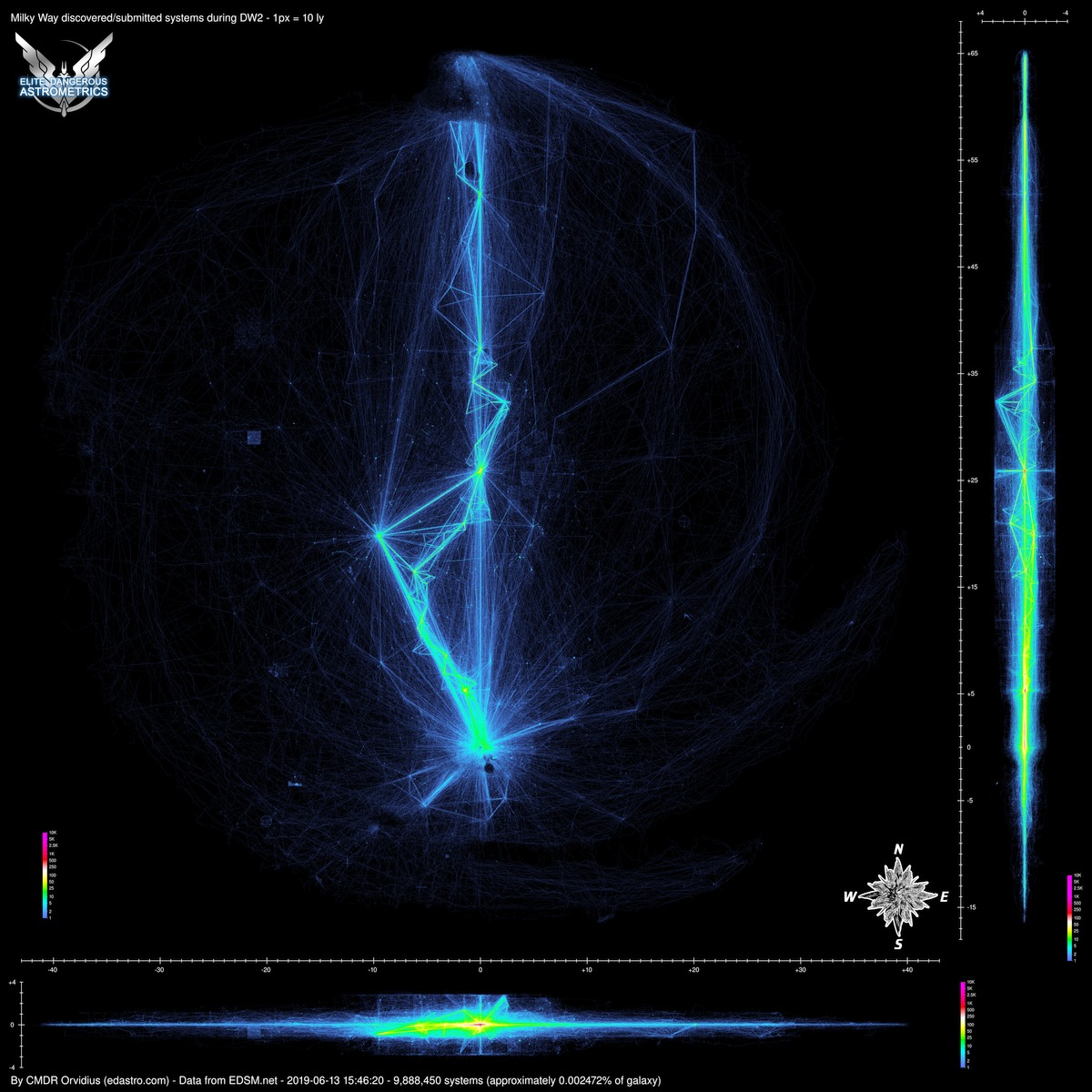Thanks for this addition! At least for me, having more POI markers makes it much easier to orient myself on the sparser parts of the map. Otherwise I found myself doing a lot of the "mouse around to get coordinates, then flip to EDSM to see what's there" dance.
Does EDSM export the POI list in a machine readable form somewhere? Might be easier going forward just to consume the full list if they do. Although at this point you're already well on your way to just reimplementing the EDSM galaxy map with a different image layer...
EDIT: And now for a bug report. Looking around, it seems like some of the new POIs you imported are conflicting with the ones you previously had. In particular, what caught my attention is that the Planetary Base marker for Polo Harbor has been replaced with a plain nebula marker for the Venetian Nebula. But maybe there's more going on here, because the Sacaqawea Space Port marker has not been replaced, and there is no mention of the Skaudai Nebula.
As far as I know, EDSM doesn't export it anywhere. That would be a cool feature though.
The Venetian Nebula marker was simply drawing over the other one (two markers in the same spot), since I didn't catch that it was the same nebula. I didn't reword the base descriptions here (Boewnst, Skaudai, etc), though I probably should. I added those markers first, since originally I was just adding deep space outposts. For now, they're at least colorized purple to indicate they're in nebulae.

